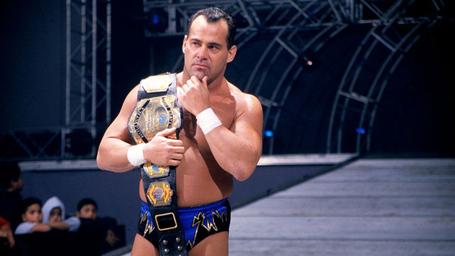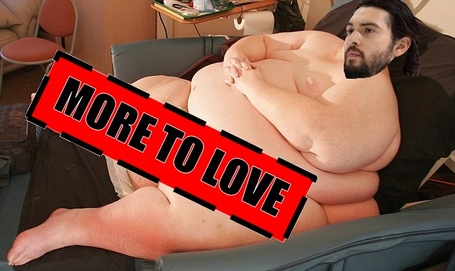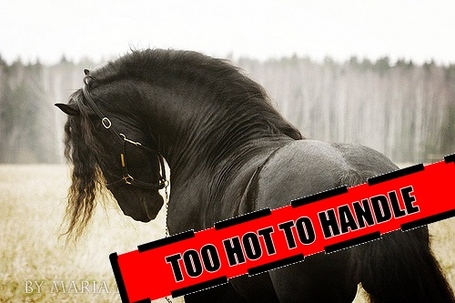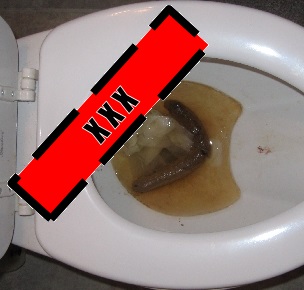
Five for Howling's fantasy corner presents a guide to the general rules of fantasy hockey. A friendly introduction to the game for beginners and a helpful tuneup for veterans of the fantasy hockey world.
Every year, millions of people indulge in playing some form of fantasy sports. It is a fun way to interact with your favorite games in a social setting with friends, family members or even complete strangers. Despite all the people engaging in and enjoying fantasy sports, there are still many who have never been involved in fantasy in any way.
One of the major reasons why people do not partake in fantasy games is that they do not feel like they understand the rules in advance, thus starting at a disadvantage. In an effort to hopefully get more people into the greatness that is fantasy hockey, here is a helpful introduction into the rules and setup for fantasy hockey.
What is fantasy hockey?
Fantasy hockey is a competition where you try to assemble the best collection of players to win either head-to-head matchups or dominate an entire season from start to finish. You assemble your group of players most often through a draft. Most fantasy hockey leagues use teams with nine forwards, six defensemen, one utility player (a forward or defenseman, player's choice), two goalies and five to seven bench spots.
You win or lose by having your players tally points in multiple statistical categories, most commonly these: goals, assists, points, power play points, shots, penalty minutes, plus/minus (+/-), time on ice (for forwards and defensemen), wins, goals against average (GAA), save percentage (SV%), shots against and shutouts (goalies). We will cover basic draft ideas and strategies in next week's article.
How do I play?
There are two common formats used to play fantasy hockey: head-to-head or rotisserie.
How does a head to head league work?
Head-to-head leagues are made up of anywhere from eight to 16 teams and must have an even number of teams. You will play against another team in a predetermined length of time that determines a single "game", most often one or two weeks. In a H2H league, you can play any combination of players available to you at any time.
Each team can play anybody in their lineup that has a game on that day as long as they have an open roster spot. This year, the first NHL game of the season is on Wednesday, October 8, so "Game 1" will begin on a Wednesday.
Most leagues will use a two-week segment to begin the season to eliminate the game imbalance that will exist due to scheduling. Take this table concerning the schedule for the first week of the season for the Pacific Division teams for example:
| Team | Number of games |
| Anaheim | 4 |
| Arizona | 2 |
| Calgary | 4 |
| Edmonton | 3 |
| Los Angeles | 4 |
| San Jose | 3 |
| Vancouver | 2 |
In a one-week league, a team made up mostly of Anaheim, Calgary and Los Angeles players would have a huge advantage based on the sheer number of games those teams play in the opening week. Now let's look at the same schedule over the opening two weeks for each team:
| Team | Number of games |
| Anaheim | 6 |
| Arizona | 5 |
| Calgary | 8 |
| Edmonton | 6 |
| Los Angeles | 6 |
| San Jose | 7 |
| Vancouver | 5 |
While there is still a gap from most games played (Calgary with eight) to least games (Arizona and Vancouver with five), there is more balanced distribution with the larger sample size. There will always be segments where a particular team plays a relatively shallow number of games or a large amount. Managing those segments is an important skill in head-to-head leagues, one that can be maximized by your waiver wire. We will talk about waivers shortly.
The key to H2H leagues is managing your lineup on a daily basis. Since there is no limit to games played per position in the majority of these leagues, you can have anyone playing a game that day in your lineup. These leagues require more daily management than rotisserie leagues and play much closer to a traditional fantasy football league. To win the match-up, you will need to win more statistical categories than your opponent (10 categories for most leagues). In H2H leagues, the standings can be done one of two ways, simple win/loss record based on the overall result of the segment or total category record.
For example, your team scores 25 goals and your opponent scores 22, you win the goals category. If your team has 48 assists, but your opponent has 51, they win in assists. In most leagues, there are 10 categories that will be used, so at the end of the segment you can have a category record ranging from 10-0-0 to 0-10-0 (you can also tie categories). If you are in a league that uses category results, they continually tally over the course of the season, so every match-up is worth 10 categories.
No matter how your league scores its segments, most H2H leagues will end with a playoff, usually taking the four teams that finish the regular season with the best records. These teams will face off with the best record taking on the fourth best and two playing three. The winners of those segments will play each other for the league championship.
What is a rotisserie league?
Rotisserie leagues are slightly easier to explain. In a rotisserie league, there are no segments. It simply tallies everything from the first game of the NHL season to the last. Rotisserie leagues can be made up of almost any number of teams, including odd numbers since there is never a head-to-head matchup needed. To win a rotisserie league, you must earn the most points at the end of the year. You earn points in these leagues by performing well in the statistical categories the league uses. For each category a league tracks, there is a number of points that can be earned based on the number of teams in the league.
For example, if you play in a league that tracks goals, assists, points, power play points, shots, time on ice, goalie wins, GAA, SV% and shutouts and there are 10 teams in the league, you can earn a maximum of 100 points in the league. Each category gives you points based on how you finish in that category relative to your league mates. A first place finish is worth 10 points, a second place finish is worth nine, third place is worth eight and so on. Ties in a category are split into halves, so if you tie for second, you get 8.5 points for the category. So here is a hypothetical point tally for a team at the end of the season for this league:
| Goals | Assists | Points | PPP | Shots | Time on Ice | Wins | GAA | SV% | Shutouts | Final points | |
| Finish | 3rd | tie 6th | 5th | 8th | tie 2nd | 5th | 1st | 3rd | 4th | 10th | |
| Points | 8 | 4.5 | 6 | 3 | 8.5 | 6 | 10 | 8 | 7 | 1 | 62 points |
At the end of the year, this team earned 62 points and would be compared against the totals of the other nine teams in the league. The team with the highest total of points is the winner.
Throughout a rotisserie year, it will keep you abreast of your team's current rankings in the individual categories your league tallies, giving you an idea of what you need to be better in. For example, the team above had excellent overall goaltending, ranking high in wins as well as goals against and save percentage, but struggled on special teams with a low assist and power play points total. Perhaps they could have traded a goaltender for a special teams specialist or a high assist player? These are the things to watch for in a rotisserie league.
One other aspect of these leagues that can be difficult for newcomers and veterans alike is that the majority of rotisserie leagues have a cap level on the number of games allowed per position. This means that you have to pay attention to games played limits. Most rotisserie leagues allow for nine forwards, six defensemen and a utility player, so over the course of the season you are allowed 738 games for your forwards (nine times 82, the number of games in a NHL season), 492 games for defenders and 82 games for your utility position. This means that you have the option to sub players in and out of your lineup at will, but you will reach your game cap very early in the season.
Players go through slumps and suffer injuries over a season, and so you may move a player that you would normally play from your lineup to your bench. This is normal and acceptable, but know that this can change your number of games left available for that position, so monitor your game limits carefully, especially at the end of the year (most online league hosts have easily understandable game limit monitors to help you).
One of my players is injured, what do I do?
Welcome to the waiver wire. Throughout a season, players will underperform or get injured, hampering your ability to field a useful lineup. The way to fix this is to add a player via waivers. You can add any player not currently on any other teams roster to your own by also dropping a player currently owned by you. If more than one team tries to add the same player, the waiver process comes into play.
The process allows the team with the worst record (in H2H leagues) or the team with the higher waiver priority (rotisserie) to get the player added, much like how waivers work in the NHL. Waiver priority changes throughout the season based on other teams use of the waiver wire. If you are in a 10 team league and your waiver priority is three, only teams with the first or second priority can get that player before you if they claim him.
Once you add a player via waivers, your priority resets to the lowest in the league. Some teams will use the waiver wire every day to keep hot players from being picked up by opposing teams or cycling nominally injured players out of their lineup. Other teams will never use the wire at all. There is no right or wrong way to use waivers, but knowing how to use it can be the difference between picking up this season's Tomas Hertl or Ben Bishopor missing out completely.
Other times, players may simply be free agents and can be acquired on a first-come, first-served basis. Check your league rules as some leagues only put players on waivers when they are initially dropped by other teams, while other leagues put all free agents on waivers every week.
***
With all the above information at your disposal, I hope you will have the inspiration to join a fantasy hockey league this season, either for the first time or add a new one to your yearly activity list. Join me again next week when we turn to the draft process and have a beginner's guide to drafting with basic strategies and ideas.
Bonus Section
For those of you who may have missed it, I am starting a Five For Howling fantasy league for the upcoming year. There are already interested parties and we need more to come to the party. This will be a free league with open arms for fantasy newcomers. Obviously, since I do write for this site, being a Coyote fan is preferred, but if you come here just for general hockey goodness, all fans are welcome.


























